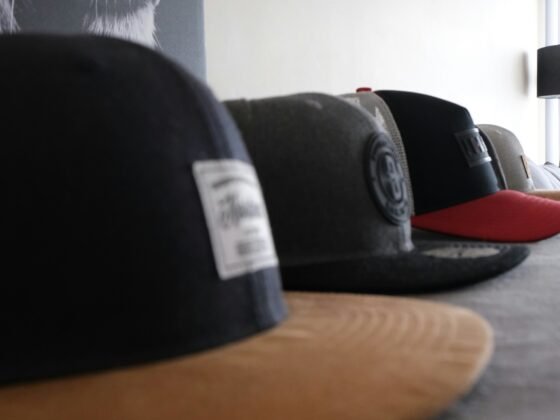Although Jamaica’s the land of rum, reggae, and Bob Marley, let us not lose track of the fact that this Caribbean paradise has a rich historical background. Few know that before the arrival of Christopher Columbus in 1503, Jamaica was already colonized by the Taino, indigenous people who used to inhabit what we know today as Haiti, The Dominican Republic, Trinidad, and Cuba. In this article, we are going to talk about a significant part of Jamaica’s history – it’s flag.
Jamaica – Historical Highlights and the Flag
Jamaica’s flag consists of a golden saltire (cross) and four juxtaposed triangles. The top and bottom triangles are green to symbolize agricultural fertility and hope while the two black triangles, located on the left and right side of the saltire stand for all the hardship Jamaica has had to endure to become a free county. But how this the flag came to be? Well, to answer that one, let’s peek into Jamaica’s history.
As we’ve said into the intro, it’s erroneous to assume that only the English crown shaped modern Jamaica. Far from it! History reveals that the island’s first inhabitants the so-called Redware people. Several pieces of pottery unearthed in Alligator Pond and Little River suggest that the Redware people lived around 600 CE.
In 800 CE, the Taino people came to Jamaica, occupying most of the island’s surface. They were organized into tribes or chiefdoms which were led by a Cacique, the Taino name for tribe leader. At the time Columbus set foot in Jamaica 1503 there were at least 29 Taino chiefdoms, the largest one having had around 3,000 residents.
Things took a turn for the worst after Columbus, as the conquistadors began flooding the island, enslaving its inhabits and stripping it of natural resources. Prior to the arrival of the English, the Spaniards managed to eradicate most of the Taino population, a significant part of them dying after becoming infected with foreign diseases.
In 1654, Oliver Cromwell sent his fleet to challenge Spain’s dominion over the Caribbean. From 1654 to 1658, Cromwell’s armada engaged the Spanish over sea and land. The conquistadors were defeated in 1657, at the Battle of Ocho Rios, and in 1658, at the Battle of Rio Nuevo. Jamaica formally became an English colony in 1658. Along with the British came slaves brought by ship from Western Africa to work on the sugar cane plantations.
The English regime was hardly an improvement, skirmishes between the remaining Spanish and the British being increasingly frequent.
As a country, Jamaica earned its own voice after the 1831 Baptist War rebellion, decades after England decided to abolish slavery and the slave trade. What we know as Jamaica is actually the lovechild of historical figures like Marcus Mosiah Garvey, an Africa-American activist that founded the Universal Negro Improvement Association and African Communities League, one of Jamaica’s first political parties.
Although the world was still in mourning after the Second World War, Jamaica saw an opportunity to gain independence. As a result, on the 6th of August 1962, Jamaica, a country that had seen only the whip of the oppressor, became free, with William Alexander Bustamante, a moneylender from Kingston, occupying the seat of Prime Minister.
Around the same time Bustamante took up the mantle of leadership, one pressing issue demanded attention – since Jamaica truly earned its freedom, she must, no doubt, have its own identity and, of course, flag.
The least known fact about Jamaica’s flag is that design we grew so accustomed to wasn’t the only choice at the time. In fact, history shows that before Jamaica’s bipartisan committee voted in favor of four triangles divided by a golden saltire design, there were at least four other versions.
The first version featured horizontal lines, with a thin saltire. However, Jamaica’s committee dismissed this design since it was very similar to Tanganyika’s flag. There’s even a strange story behind how the design was chosen. Of course, like any story, one cannot say if it’s real or fictitious.
Apparently, at the time when the committee was arguing over the flag’s design, a certain Scottish minister by the name of father Reverend William R.F McGhie paid a visit to Bustamante, who had only recently been knighted.
McGhie, who knew Bustamante long before he became Jamaica’s first Prime Minister, was invited to his residence in late August. During their talks, Bustamante showed McGhie the flag proposals he received from the committee. The story has it that it was McGhie who counseled Bustamante on using St. George’s cross instead of the thin and horizontal saltire.
By all accounts, Bustamante was so taken aback by McGhie’s proposal, that he decided to vote in favor of the design.
Conclusion
Jamaica’s flag doesn’t only stand for the hardship its people had to endure in order to be free, but for those whose names were deliberately erased from history. The Taino people used to call this land Xaymaca, which means the land of wood and water. The two green triangles adorning Jamaica’s flag represent the country’s fertility and the diversity of natural resources.
Follow this link if you want to find out more about the Jamaican flag or the people behind its design.












